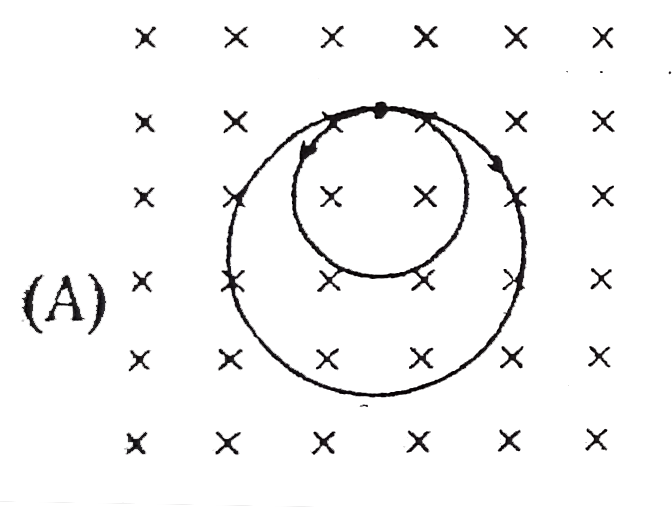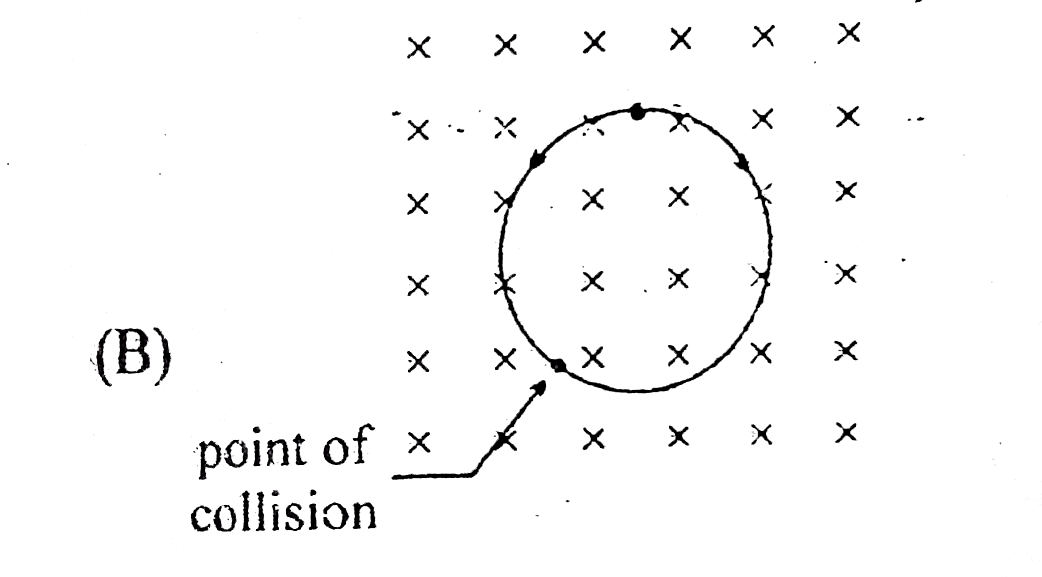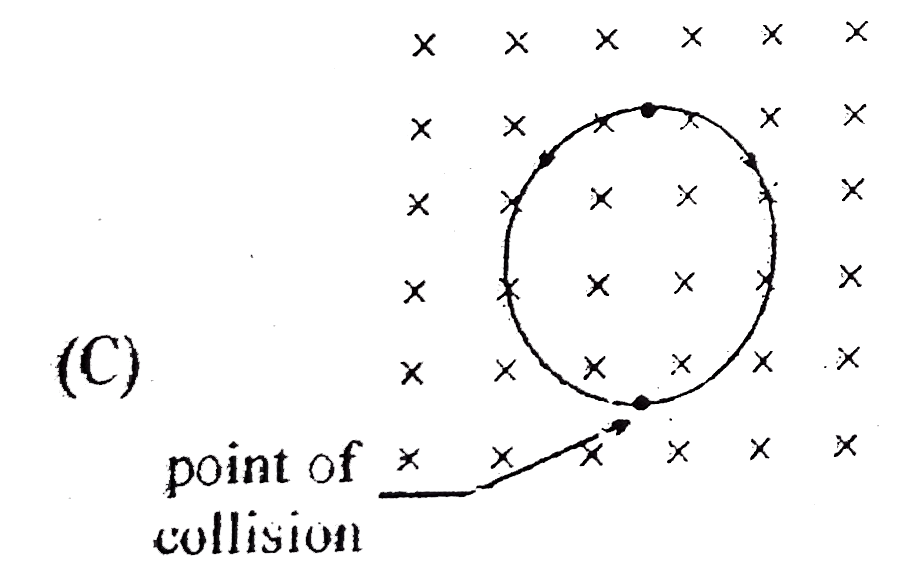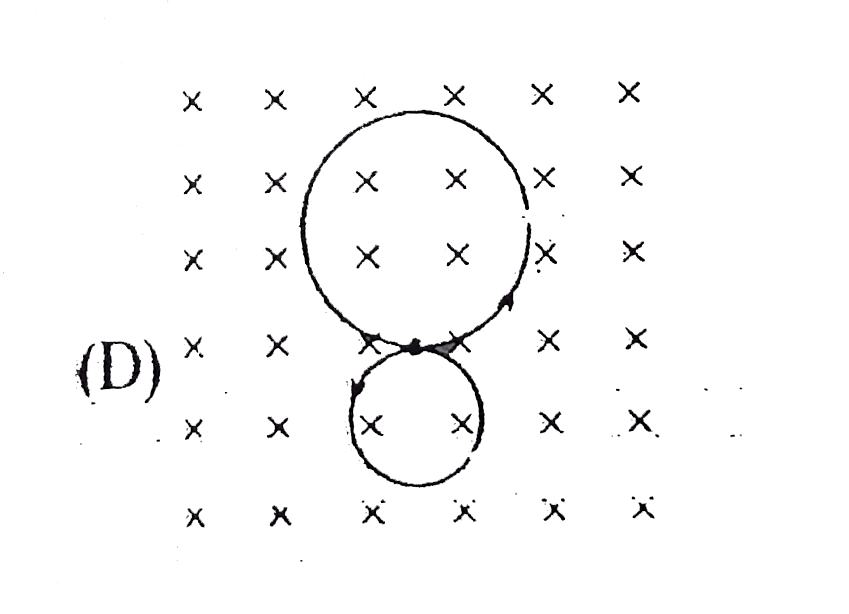A neutral particle at rest at A decays into two charged particles of different mass. Which can be ignore any gravitational and electrostatic force?




The correct Answer is:B
Topper's Solved these Questions
- PHYSICS PART2BOOK - FIITJEECHAPTER - PHYSICS PART2EXERCISE - Section (I) : Subjective
4 Videos
- PHYSICS PART2BOOK - FIITJEECHAPTER - PHYSICS PART2EXERCISE - Section (II) : MCQ
27 Videos
- PHYSICS PART-IIIBOOK - FIITJEECHAPTER - PHYSICS PART-IIIEXERCISE - NUMERICAL BASED QUESTIONS DECIMAL TYPE
11 Videos
- ROTATIONAL MECHANICSBOOK - FIITJEECHAPTER - ROTATIONAL MECHANICSEXERCISE - COMPREHENSION - IV
2 Videos
Similar Questions
A neutral particle at rest in a magnetic field decays into two charged particles of different mass. The energy released goes into their kinetic energy. Then what can be the path of the particles. Neglect any interaction between the two charges.
View SolutionA neutral particle is at rest in a uniform magnetic field B. At time t=0 it decays into two charged particles, each of mass m.
(a) If the charge of one of the particles is +q, what is the charge of the other?
(b) The two particles move off in separate paths, both of them lie in the plane perpendicular to B. At a later time, the particles collide. Express the time from decay until collision in terms of m,B and q.
View Solution
Knowledge Check
A neutral particle at rest in a magnetic field decays into two charged particles of different mass. The energy released goes into their kinetic energy. Then what can be the path of the particles. Neglect any interaction between the two charges.
A B
B C
C D
D
Two particles , each of mass m and carrying charge Q , are separated by some distance. If they are in equilibrium under mutual gravitational and electrostatic force then Q/m(∈C/kg) is of the order of
A10−5B10−10C10−15D10−20Consider a particle at rest which may decay into two (daughter) particles or into three (daughter) particles. Which of the following is/are true? (There are no external forces):
AThe velocity vectors of the daughter particles must lie in a plane.BGiven the total kinetic energy of system and the mass of each daughter particle, it is possible to determine the speed of each daughter particle.CGiven the speed (s) of all but one daughter particle it is possible to determine the speed of the remaining particle,DThe total momentum of the daughter particles is zero.
A neutral particle is at rest in a uniform magnetic field B. At time t=0 it decays into two charged particles, each of mass m.
(a) If the charge of one of the particles is +q, what is the charge of the other?
(b) The two particles move off in separate paths, both of them lie in the plane perpendicular to B. At a later time, the particles collide. Express the time from decay until collision in terms of m,B and q.
View SolutionIn fig. a central particle of charge −q is surrounded by two circular rings of charged particle of radii r and R, with Rgtr. what is the magnitude and dirction of the net electrostatic force on the central particle due to the other particles?

View SolutionIn fig. a central particle of charge −q is surrounded by two circular rings of charged particle of radii r and R, with Rgtr. what is the magnitude and dirction of the net electrostatic force on the central particle due to the other particles?

View SolutionA neutral particle is at rest in a uniform magnetic field →B.At t=0,particle decays into two particles each of mass m and one of them having charge q Both of these move off in separate paths lying in plane perpendicular to →B.A later time,the particles collide.Find this time of collision neglecting the interaction force.
View SolutionA particle of a mass M at rest decays into two particles of masses m1andm2 having non-zero velocities. What is the ratio of the de-Broglie wavelength of the two particles?
View Solution
